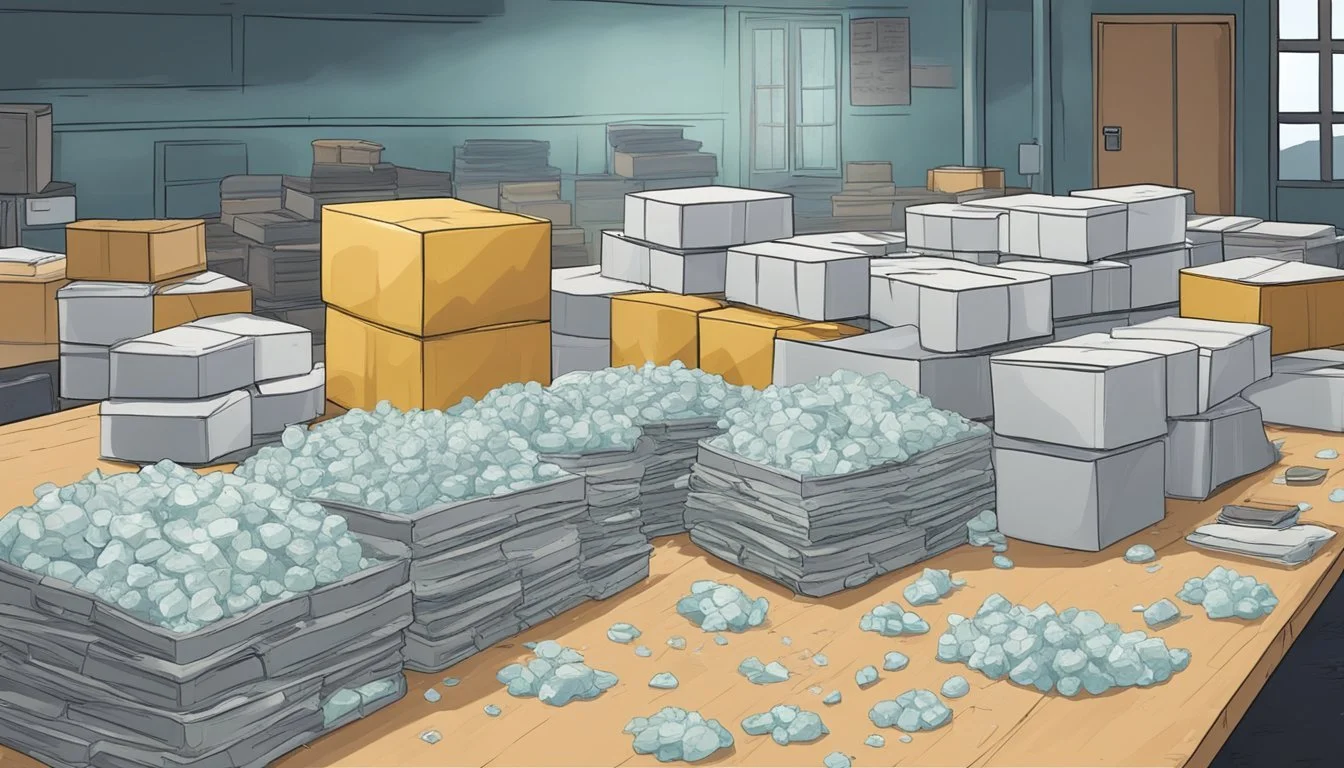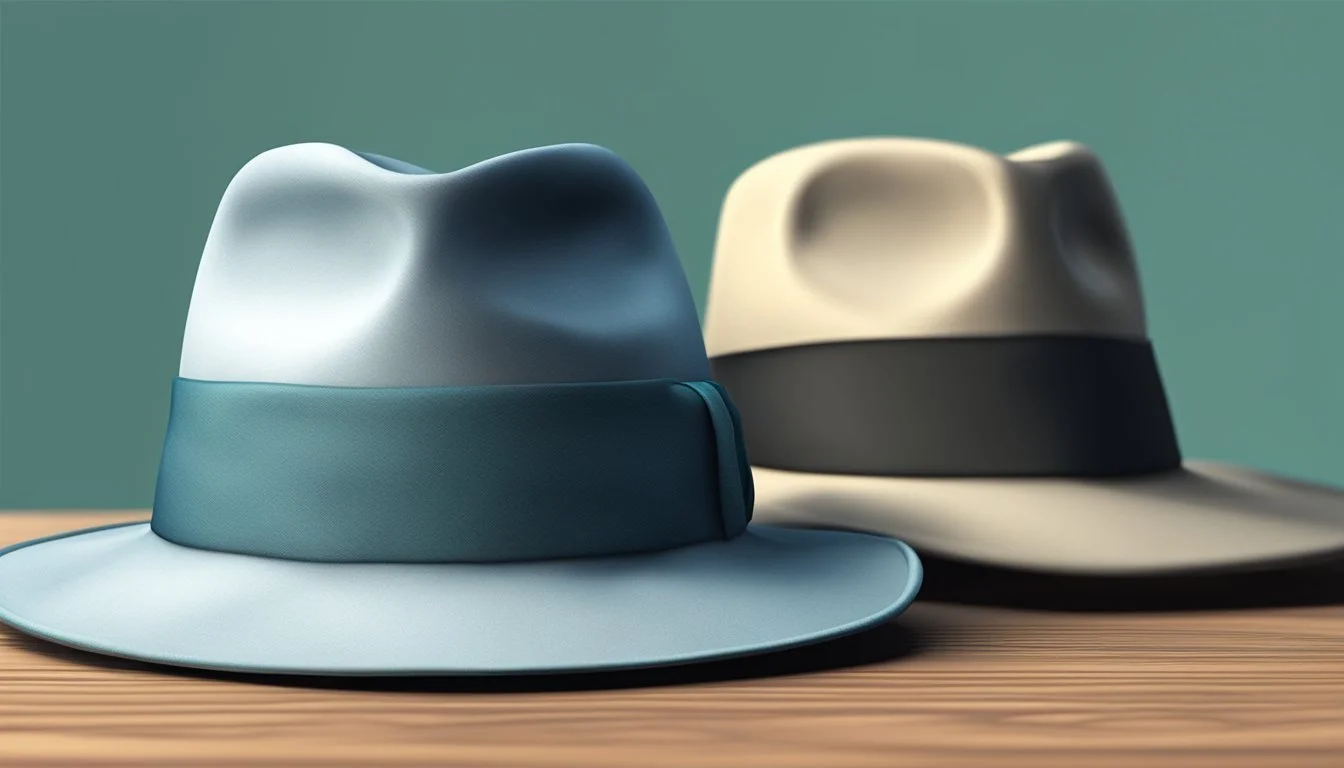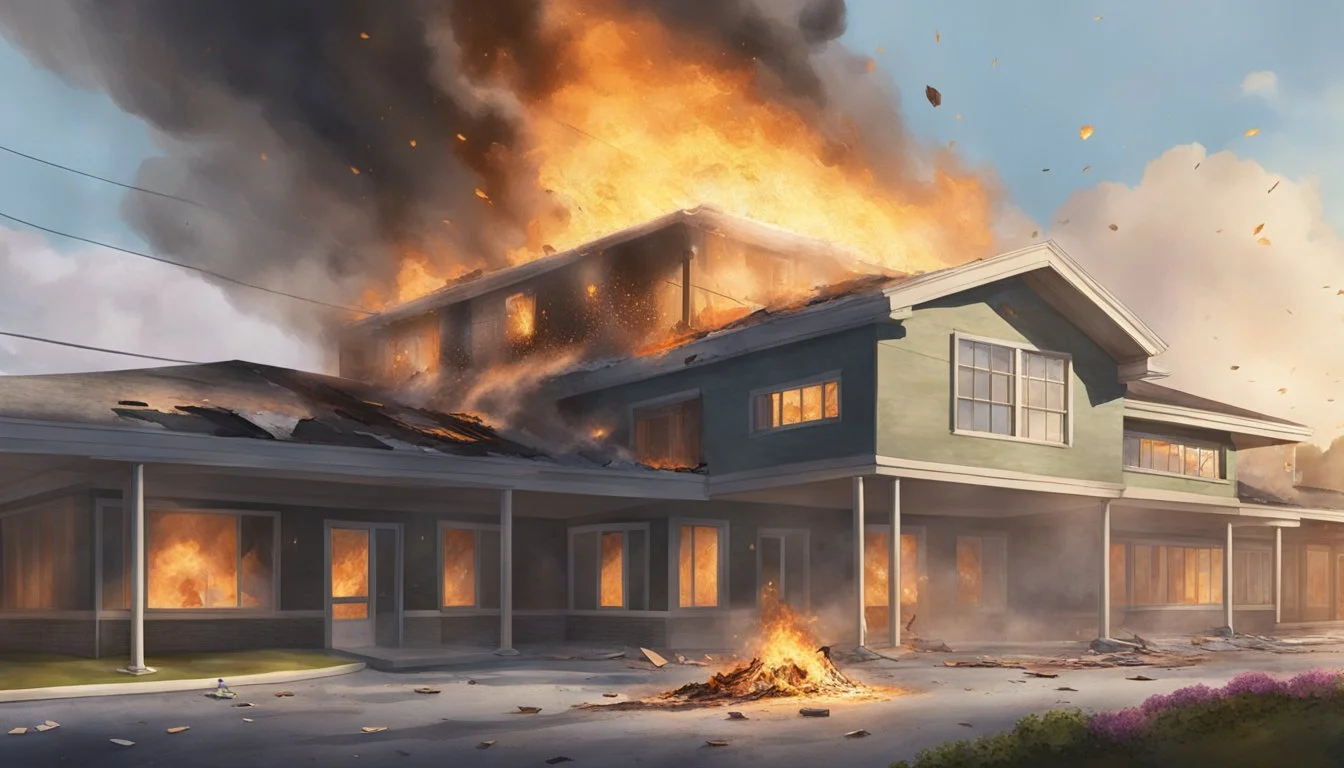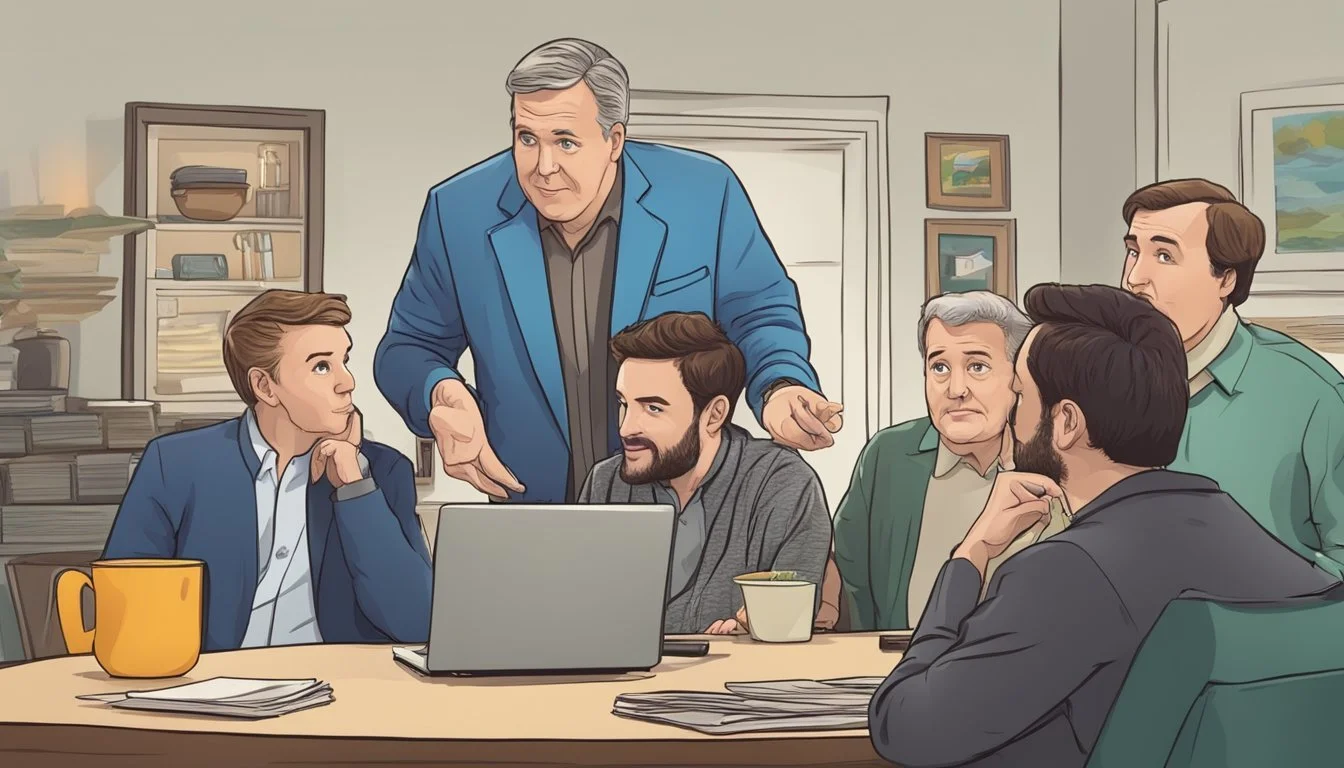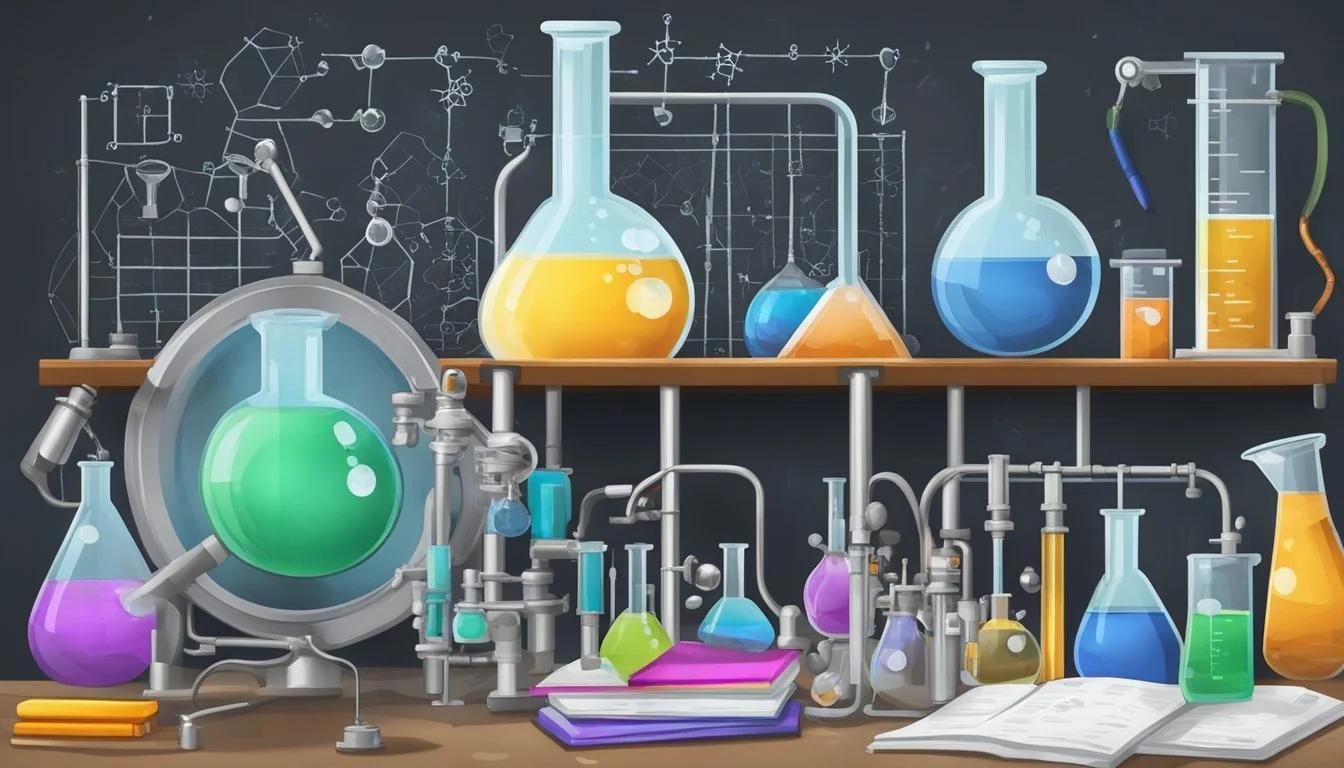15 Breaking Bad Behind-the-Scenes Facts That Will Surprise You
Insider Revelations from the Hit Series
Breaking Bad captivated audiences with its gripping storyline and complex characters. The critically acclaimed series, which ran from 2008 to 2013, became one of the most influential TV shows in recent history. Behind the polished final product lies a treasure trove of fascinating production details and on-set anecdotes.
The show's creators and cast worked tirelessly to bring the world of Walter White and Jesse Pinkman to life. From unexpected casting choices to improvised moments that made it into the final cut, Breaking Bad's production was filled with surprising elements. These behind-the-scenes facts offer fans a deeper appreciation for the artistry and effort that went into crafting this groundbreaking series.
1) Bryan Cranston directed three episodes
Bryan Cranston, known for his Emmy-winning portrayal of Walter White, also showcased his talents behind the camera on "Breaking Bad". He directed three episodes of the critically acclaimed series during its run.
Cranston's directorial debut came in season 2 with the episode "Seven Thirty-Seven". This experience allowed him to expand his creative involvement in the show beyond acting.
His second directorial effort was "No Más", the season 3 premiere. This episode set the tone for the aftermath of the dramatic events that concluded the previous season.
Cranston's final turn as director came in season 5 with "Blood Money". This episode marked the beginning of the show's final arc and is considered by many to be his strongest directorial work on the series.
These directing opportunities gave Cranston a unique perspective on the show's production. They allowed him to contribute to "Breaking Bad" in ways that went beyond his iconic performance as Walter White.
2) Aaron Paul did all his own stunts
Aaron Paul, known for his role as Jesse Pinkman in Breaking Bad, showcased his dedication to his craft by performing his own stunts. This commitment extended beyond the TV series into his film work.
In the movie Need for Speed, Paul took on the challenge of doing his own stunt driving. He underwent intensive training to prepare for the high-octane scenes, demonstrating his willingness to push his limits as an actor.
Paul's decision to perform his own stunts added authenticity to his performances. It allowed for more realistic and immersive action sequences, as the audience could see the actor himself behind the wheel.
This hands-on approach also gave Paul a deeper understanding of his characters' experiences. By physically engaging in the stunts, he could better portray the emotions and reactions of his roles.
Paul's stunt work in Need for Speed was particularly notable. He found that the actual stunt driving was easier than he initially expected, showcasing his natural aptitude for the skill.
3) The show used over 1,000 pounds of prop meth
Breaking Bad's iconic blue meth played a central role in the series. The production team needed a convincing substitute for the illicit drug that was safe to handle and film.
They settled on crushed rock candy as the primary prop meth. This edible stand-in closely resembled the real substance in appearance and texture.
Over the course of filming, the show used an estimated 1,000 pounds of this candy prop. The sheer quantity speaks to the meth's prominence throughout the series.
The prop meth was sourced from a local Albuquerque candy shop called The Candy Lady. They produced the special blue rock candy exclusively for the show.
While the prop looked realistic on camera, it was completely harmless. Cast members could safely handle large quantities without any health risks.
This massive amount of prop meth allowed for visually striking scenes featuring piles of the "product" and close-up shots of cooking and packaging.
4) Cranston and Paul each got the iconic Heisenberg hat
Bryan Cranston's portrayal of Walter White in Breaking Bad included a memorable transformation into his alter ego, Heisenberg. The porkpie hat became a symbol of this change, instantly recognizable to fans.
After the show concluded, Cranston kept the iconic Heisenberg hat as a souvenir. This memento served as a tangible reminder of his time playing the complex character of Walter White.
Interestingly, Aaron Paul also received a Heisenberg hat. While his character Jesse Pinkman didn't wear the hat on screen, Paul's acquisition of this prop highlights its significance to the show's legacy.
The porkpie hat's journey began when it was chosen to protect Walter White's newly shaved head from the Albuquerque sun. It quickly evolved into a key element of Heisenberg's intimidating persona.
Both actors' decision to keep the hat demonstrates its importance not only to the show's visual identity but also to their personal experiences working on Breaking Bad.
5) R.J. Mitte shares his character's cerebral palsy
R.J. Mitte, who played Walter White Jr. in Breaking Bad, has cerebral palsy in real life. He was diagnosed with a mild form of the condition as a toddler.
In the show, Mitte's character also has cerebral palsy, but with more severe symptoms. Walter Jr. uses crutches and has a speech impairment, which Mitte doesn't have in reality.
To portray the character accurately, Mitte had to learn how to use crutches and slur his speech. This required dedication and practice to convincingly depict a more severe form of cerebral palsy.
Mitte's role in Breaking Bad helped raise awareness about cerebral palsy. As one of the few television actors with a visible disability, he contributed to increased representation on screen.
The actor's personal experience with cerebral palsy likely informed his performance, allowing for a more authentic portrayal of the condition. This shared characteristic between actor and character added depth to Walter Jr.'s depiction.
6) Gus Fring's death scene took weeks to plan
Gus Fring's explosive demise in Breaking Bad's fourth season finale was a pivotal moment in the series. The scene required extensive preparation and meticulous execution to achieve its memorable impact.
The show's creative team spent weeks devising the perfect way to portray Gus's death. They wanted to create a scene that was both shocking and visually striking, while still maintaining the show's gritty realism.
Special effects artists worked tirelessly to design the prosthetics needed for Giancarlo Esposito, who played Gus. The goal was to create a realistic half-destroyed face that would be revealed after the explosion.
Multiple takes were filmed to capture the scene from different angles. The crew had to ensure that every detail, from the explosion itself to Gus's final moments, was executed flawlessly.
The scene's success can be attributed to the collaborative effort of the entire production team. Writers, directors, special effects artists, and actors all played crucial roles in bringing this iconic moment to life.
7) 'Ozymandias' is often cited as the best episode
'Ozymandias' stands out as a pinnacle achievement in Breaking Bad's critically acclaimed run. This episode, the fourteenth of the fifth season, has garnered widespread praise from fans and critics alike.
Many consider it not just the best episode of Breaking Bad, but one of the greatest television episodes ever produced. It holds a perfect 10/10 rating on IMDb based on over 200,000 votes, a testament to its impact on viewers.
The episode's strength lies in its intense storytelling and powerful performances. It features several pivotal moments that dramatically alter the course of the series, including Walt's phone call to Skyler and Hank's fate.
Rian Johnson directed 'Ozymandias', bringing his cinematic flair to the small screen. The episode's name comes from Percy Bysshe Shelley's poem about the fall of empires, fitting for Walter White's crumbling criminal empire.
'Ozymandias' exemplifies Breaking Bad's ability to blend character development, plot progression, and thematic depth into a single, unforgettable hour of television. Its reputation as the series' best episode has only grown stronger since its initial airing.
8) Walter White's wardrobe went from beige to black
Walter White's clothing choices in Breaking Bad were far from random. His wardrobe evolved throughout the series, reflecting his transformation from mild-mannered chemistry teacher to ruthless drug kingpin.
At the beginning of the show, Walter's outfits consisted primarily of beige, green, and cream tones. These muted colors represented his bland, unremarkable existence as a high school teacher and family man.
As Walter embraced his alter ego Heisenberg, his wardrobe gradually shifted to darker hues. Black became increasingly prominent in his attire, symbolizing his descent into the criminal underworld.
The costume designers used this color progression to visually communicate Walter's character development. His clothing choices became a subtle yet powerful storytelling tool, enhancing the narrative without relying on dialogue.
By the final seasons, Walter's wardrobe was dominated by black, mirroring the darkness that had consumed his soul. This stark contrast to his initial beige ensembles highlighted just how far he had strayed from his former self.
9) The iconic pizza on the roof was done in one take
Breaking Bad's famous pizza-throwing scene left a lasting impression on viewers. In a moment of frustration, Walter White hurls an entire pizza onto the roof of his house.
This memorable shot was captured in a single take. Bryan Cranston, who played Walter White, managed to land the pizza perfectly on his first attempt.
The unsliced nature of the pizza was intentional. It allowed the prop to remain intact when thrown, ensuring it would stay on the roof as needed for the plot.
The scene's popularity led to unexpected consequences. Some fans began recreating the pizza toss at the real-life house used for filming, causing issues for the property owners.
This incident prompted the show's creator, Vince Gilligan, to publicly discourage fans from throwing pizzas on the house. It highlights how a single, well-executed scene can have far-reaching effects beyond the show itself.
10) Bob Odenkirk improvised many of Saul Goodman's lines
Bob Odenkirk brought his comedic talents to the role of Saul Goodman in Breaking Bad. The actor's background in sketch comedy and improv proved invaluable on set.
Odenkirk frequently ad-libbed dialogue and added his own flair to Saul's colorful expressions. His quick wit and ability to think on his feet enhanced many of Saul's memorable scenes.
The writers gave Odenkirk freedom to play with the character's dialogue. This trust in his comedic instincts allowed for spontaneous moments that perfectly captured Saul's personality.
Some of Saul's most quotable one-liners were actually Odenkirk's improvisations. His additions often made it into the final cut, as they fit seamlessly with the character's voice.
This collaborative approach between the actor and writers helped shape Saul into the fan-favorite character he became. Odenkirk's improvisations added an extra layer of authenticity to the morally flexible lawyer.
11) Vince Gilligan got the idea from a news article
Contrary to popular belief, Vince Gilligan did not get the idea for Breaking Bad from a news article. The show's concept actually came to him during a phone conversation with a friend.
Gilligan was going through a tough period in his career, having been without work for a couple of years. During this time, he and his friend joked about the desperate measures they might take to make money.
This casual conversation sparked Gilligan's imagination. He began to ponder what might drive a law-abiding citizen to suddenly enter the world of crime.
The idea of a chemistry teacher turning to drug manufacturing took root in Gilligan's mind. He saw potential in exploring the transformation of an ordinary person into a criminal mastermind.
This initial spark of inspiration led Gilligan to develop the character of Walter White and the premise of Breaking Bad. The show went on to become one of the most critically acclaimed television series of all time.
12) The show was almost filmed in California
Breaking Bad's iconic New Mexico setting was not the original plan. Creator Vince Gilligan initially intended to set and film the show in Riverside, California.
The shift to Albuquerque, New Mexico came about due to financial incentives offered by the state. This decision significantly impacted the show's visual style and storytelling.
New Mexico's distinctive landscape, including the Sandia Mountains, became an integral part of Breaking Bad's atmosphere. The desert scenery provided a unique backdrop for many pivotal scenes.
Filming in Albuquerque allowed the show to incorporate local landmarks and locations. This authenticity contributed to the series' sense of place and realism.
The change in setting also influenced character development and plot elements. The New Mexico environment shaped the story in ways that may not have been possible in California.
Today, Breaking Bad's connection to Albuquerque is so strong that fans travel there to visit filming locations. The show's success has boosted tourism in the area.
13) Dean Norris initially passed to join a sitcom
Dean Norris, known for his role as Hank Schrader in Breaking Bad, almost missed out on the iconic part. Before joining the critically acclaimed drama, Norris was offered a role in a sitcom.
The actor faced a difficult decision when presented with the opportunity to join Breaking Bad. At the time, he had already committed to a comedy series pilot.
Norris ultimately chose to pass on the sitcom, freeing himself to take on the role of DEA agent Hank Schrader. This decision proved to be pivotal for his career.
The choice to join Breaking Bad instead of pursuing the sitcom opportunity showcased Norris's instinct for selecting impactful roles. His portrayal of Hank became one of the most memorable characters in the series.
Norris's background, including his Harvard education, likely influenced his ability to make such a crucial career decision. His choice to join Breaking Bad ultimately led to widespread recognition and critical acclaim.
14) Color symbolism played a big role in storytelling
Breaking Bad's creators used color symbolism as a powerful storytelling tool throughout the series. Each character was associated with specific colors that reflected their personality and journey.
Walter White's transformation from mild-mannered teacher to criminal mastermind was mirrored in his wardrobe. He started in beige and khaki tones, symbolizing his bland life, before transitioning to darker colors as he embraced his Heisenberg persona.
Jesse Pinkman's clothing choices often featured reds and yellows, representing danger and caution. These colors highlighted his volatile nature and the risks he faced in the drug trade.
Skyler White's wardrobe shifted from warm blues, signifying stability, to cooler tones as her relationship with Walt deteriorated. This visual cue subtly conveyed the growing emotional distance between them.
The show's creators also used color to enhance the mood of scenes. The stark white of the meth represented purity, while the desert's yellow hues evoked a sense of decay and moral corruption.
By carefully selecting colors for characters, props, and settings, Breaking Bad added depth to its visual storytelling. This attention to detail enriched the viewing experience and provided subtle cues about character development and plot progression.
15) Skyler's obsession with cleanliness was intentional
Skyler White's meticulous attention to cleanliness in Breaking Bad was a deliberate character trait. The show's creators used this aspect to highlight her need for control and order in her life.
This obsession manifested in various ways throughout the series. Viewers often saw Skyler meticulously cleaning her home, organizing belongings, and maintaining a pristine environment.
Her focus on cleanliness stood in stark contrast to the chaotic and messy world of drug manufacturing that her husband Walter entered. This juxtaposition helped emphasize the growing divide between Skyler and Walt.
The character's preoccupation with cleanliness also served as a metaphor for her desire to keep her family life untainted by Walt's illegal activities. As the series progressed, her struggle to maintain this cleanliness became increasingly difficult.
Skyler's cleaning habits were also used to show her stress and anxiety. In tense moments, she would often engage in cleaning as a coping mechanism, trying to regain a sense of control over her surroundings.
The Inspiration Behind the Series
"Breaking Bad" emerged from a unique blend of creative vision and real-world influences. The show's genesis drew from both personal experiences and societal observations, resulting in a groundbreaking television series.
Vince Gilligan's Vision
Vince Gilligan, the creator of "Breaking Bad," conceived the show's premise during a conversation with a fellow writer. They joked about driving around in a mobile meth lab as a last resort if their careers failed. This sparked Gilligan's imagination, leading him to explore the concept of a law-abiding citizen turning to crime.
Gilligan wanted to create a character-driven drama that would challenge traditional TV storytelling. He envisioned a protagonist who would transform from a sympathetic character into an antagonist over the course of the series. This ambitious narrative arc became the foundation for Walter White's journey.
Real-Life Influences
Several real-world factors shaped the development of "Breaking Bad." The rising costs of healthcare in the United States played a significant role in crafting Walter White's motivation. His initial turn to crime stemmed from a desire to secure his family's financial future after a cancer diagnosis.
The show's setting in Albuquerque, New Mexico, was inspired by the state's financial incentives for film production. This location choice ultimately became integral to the series' unique visual style and atmosphere. The region's desert landscapes and distinctive culture provided a compelling backdrop for the unfolding drama.
Innovative Filming Techniques
Breaking Bad's visual style set new standards for television cinematography. The show employed creative camera work and cutting-edge effects to enhance storytelling and character development.
Unique Camera Angles
Breaking Bad utilized unconventional camera angles to create visual interest and convey meaning. Low-angle shots emphasized Walter White's growing power and ego. Overhead shots provided a sense of isolation or judgment. The series often placed cameras in unusual locations, like inside a washing machine or tied to a shovel.
Time-lapse photography served as a recurring technique. These sequences compressed long periods into brief, visually striking montages. They showed the passage of time and highlighted the relentless march of events beyond the characters' control.
The show also employed POV shots to immerse viewers in characters' experiences. Notable examples include shots from inside a bathtub during a body disposal scene and from a roomba's perspective as it navigated a meth lab.
Special Effects Usage
Breaking Bad's special effects enhanced realism and visual impact without overshadowing the story. Practical effects were favored when possible. For the infamous bathtub scene, the crew built a fake ceiling to create the illusion of it collapsing under corrosive chemicals.
Digital effects were used sparingly but effectively. CGI enhanced explosion scenes and created the appearance of large quantities of drugs. The iconic pink teddy bear was digitally inserted into several shots to foreshadow future events.
Makeup effects played a crucial role in depicting injuries and aging. The transformation of Walter White from a mild-mannered teacher to a hardened criminal was partly achieved through subtle makeup changes over the series.




